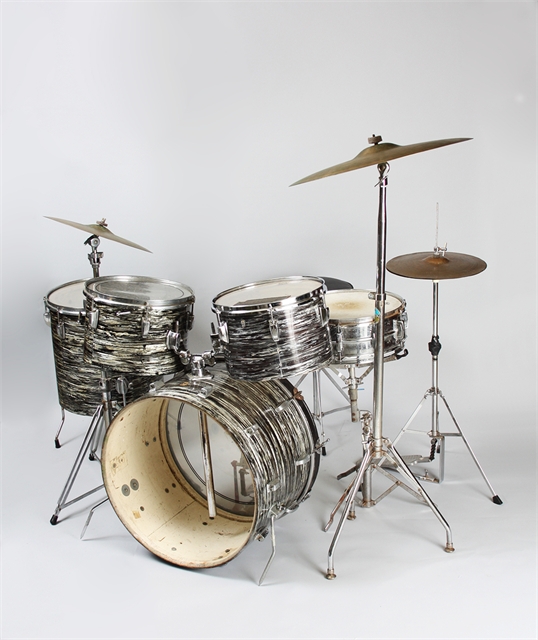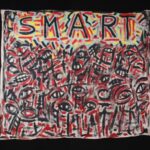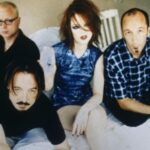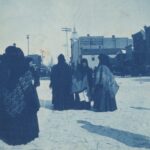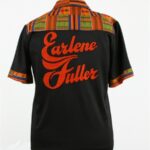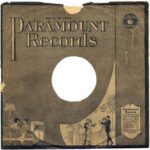When the Beatles performed on the February 9, 1964, “Ed Sullivan Show,” teenage girls in the studio swooned and those at home went crazy with excitement. Adolescent boys, however, couldn’t keep their eyes off band member Ringo Starr’s Ludwig drum kit with the oyster black pearl finish. Soon after the Beatles’ performance, the Chicago-based Ludwig Drum Company experienced its largest sales boom ever.
In 1964, 17-year-old Carl Gulbrandsen of Viroqua, Wisconsin, was a drummer for the folk band, the Burgundy Five. He may have seen that Ed Sullivan broadcast or heard about Starr’s stylish drum set, because the next year he purchased one. When he left town to be a college student at the University of Wisconsin, Gulbrandsen gave the drums to his 12-year-old cousin, Butch Vig. Vig would go on to fame and fortune as the drummer of the alternative rock band Garbage. And his Ludwig drum kit would go with him.
Butch Vig Discovers the Drums
Bryan David Vig (b. 1955) grew up in Viroqua, Wisconsin, the son of a doctor and a music teacher. At some point in his childhood, Vig’s father gave him “a severe crew cut.” From then on, he was known as “Butch.” With a music teacher for a mother, Vig dutifully took piano lessons for six years. But as a 12-year-old, he was blown away watching The Who perform on the September 17, 1967, episode of “The Smothers Brothers Comedy Hour.” At that moment he decided he was meant to be a drummer. Vig later recalled that it was shortly after the Smothers Brothers show that his cousin gave him the Ludwig drum kit.
That Oyster Black Pearl Finish
Ludwig Drum Company owner William Ludwig, Jr. remembered the reaction to Ringo Starr’s drum set on the Ed Sullivan Show saying, “Even though we had stepped up our production, the orders for our drums came in faster than we could make them.” Like all Ludwig drums at the time, Starr’s had a wooden shell with a plastic “pearl” wrap glued to the outer shell. The oyster pearl finish had mother-of-pearl-like swirls and striations. It came in pink and blue, but black was always the most popular because of its association with Ringo Starr. In the late 1960s, the company introduced a modified version of the pearl finish, but critics felt it lacked the visual depth and complexity of the original.
Butch Vig’s Drum Kit Through the Years
Luckily for future collectors and curators, the Ludwig Drum Company began putting serial numbers on its drum parts around the time of Ringo Starr’s “Ed Sullivan Show” performance. From these numbers, we know that Vig’s drum kit dates to 1965. In its original form it included a bass drum with a Beatles drumhead (now missing) and two toms on top, a floor tom, a snare drum, three cymbals, a foot pedal, and a stool.
Vig took the drum kit with him from Viroqua to Madison when he enrolled as a student at the University of Wisconsin. During his college years, Vig played in a number of garage bands, including Eclipse. As a hip college student, Vig decided the black oyster pearl finish looked dated and painted his drum set matte black. He also wore out the snare drum, replacing it with a chrome finish Ludwig snare drum in 1978. He replaced the stool in the mid-1970s.
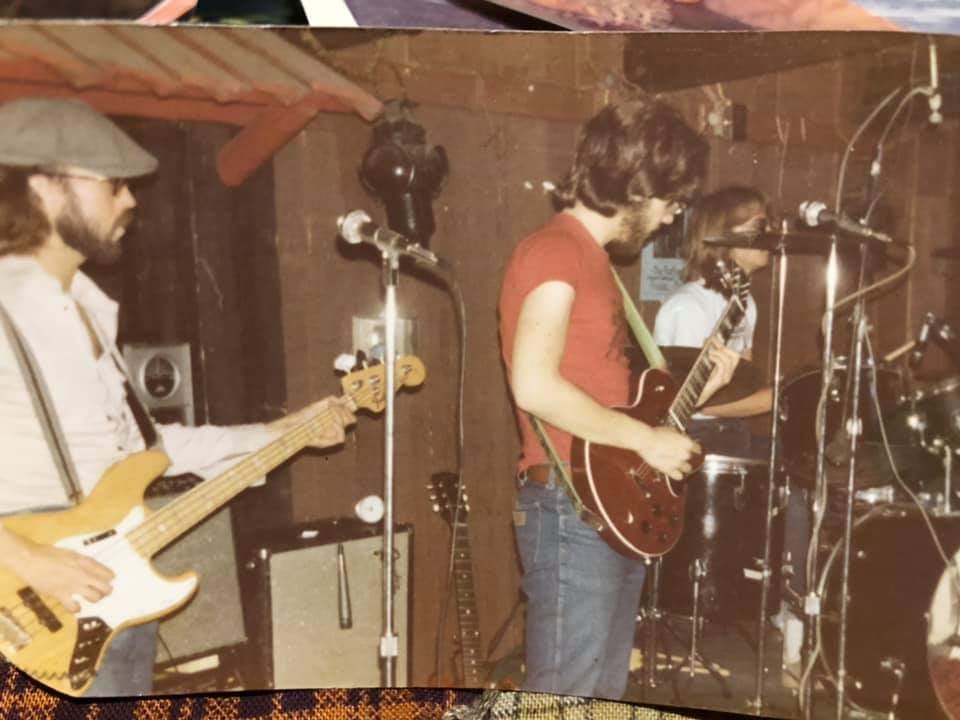
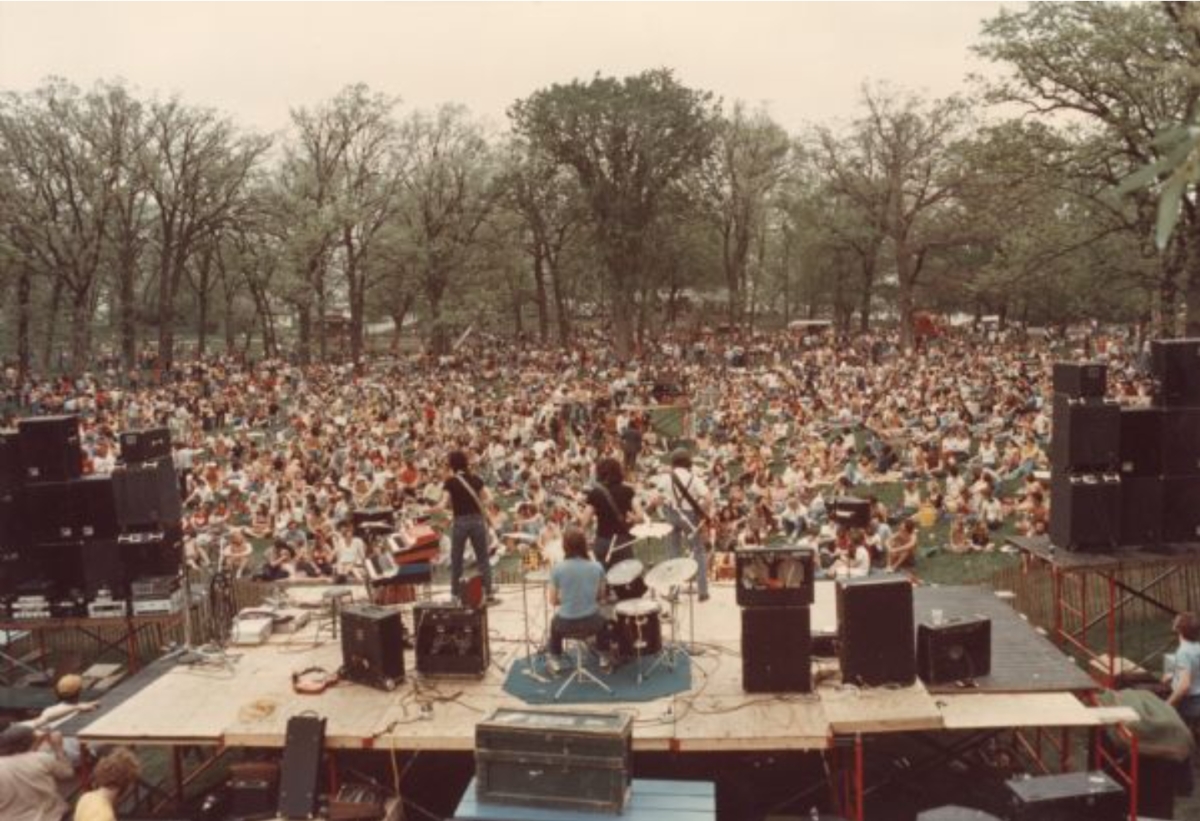
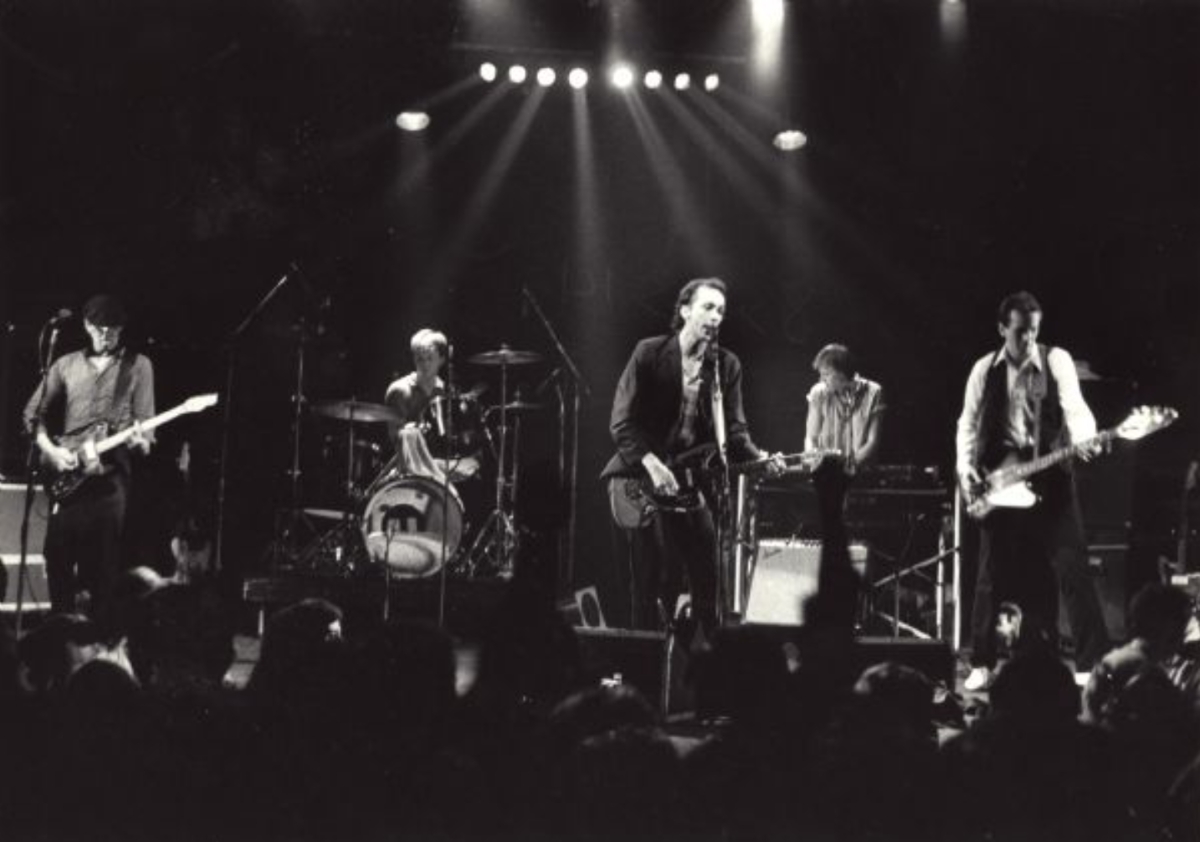
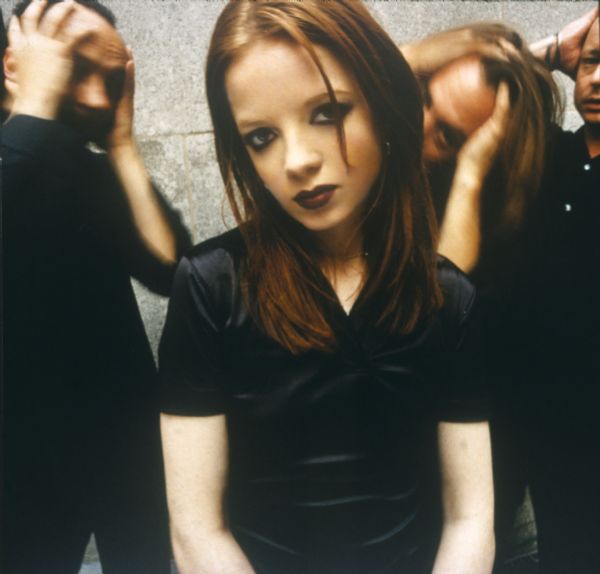
Vig Becomes Famous
Fans first took notice of Vig’s drumming ability when he joined the band Spooner around 1975. Some have called the band’s sound Power Pop and others, New Wave. But whatever it was, Spooner soon had a coterie of fans who never missed a show as they traveled around the Midwest.
By 1986 the band had produced three singles and two albums. Critics often praised these records, but the general public never caught on. As Spooner petered out in the mid-1980s, Vig and his friend Steve Marker founded Smart Studios on Madison’s east side. The studio acquired a reputation for producing high-quality punk, grunge, and alternative music, especially after they helped record and mix grunge band Nirvana’s wildly popular album, “Nevermind.”
Even though many knew Vig primarily as a music producer, he did not give up his interest in playing drums. In the late 1980s he played with the band Fire Town and briefly resurrected Spooner. In 1994 he created the alternative rock band Garbage with Marker and Duke Erikson, a former Spooner and Fire Town musician. Feeling the need for a female singer with a raw, deep sound, they hired Scottish vocalist Shirley Manson. The rest, they say, is history. Garbage put out its eponymous first album in 1995 and it shot onto the Billboard charts. Their second record, “Version 2.0,” continued this trajectory and led to two Grammy nominations.
The Drum Kit’s Retirement
Vig played his Ludwig drum kit through the Spooner and Fire Town years, and possibly in the first year or so of Garbage, but by then it was old. He retired it to Smart Studios where it served as the house drum set for the next 15 years or so. When Vig and Marker decided to close Smart Studios in 2010, Vig offered the drums to the Wisconsin Historical Society. He insisted that the black paint be removed and the oyster black pearl finish be restored to its original luster.
This story was edited and adapted from a Wisconsin Historical Society ‘Curators’ Favorites’ essay (Published October 2012).

Wisconsin Historical Society
This object is part of the Wisconsin Historical Society collection in Madison, Wisconsin. Wisconsin History Museum Object #2011.67.1.1-.6. It has also been featured as part of the Curators’ Favorite Collection. Explore more objects from the collection here!
